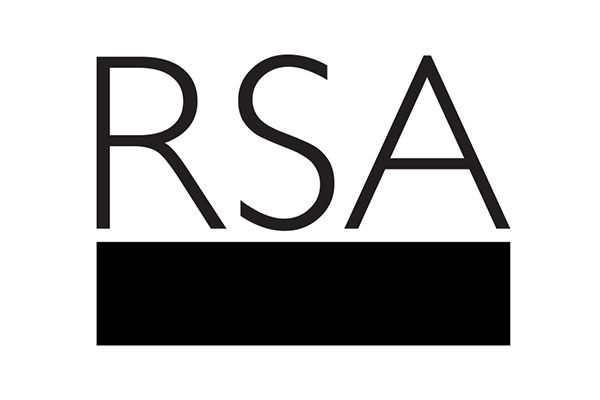I promised yesterday to offer some evidence that the four categories of cultural theory are fundamental and ubiquitous. I will stick to this despite the temptation to respond to the fascinating conversation about CT taking place on my comment pages.
I promised yesterday to offer some evidence that the four categories of cultural theory are fundamental and ubiquitous. I will stick to this despite the temptation to respond to the fascinating conversation about CT taking place on my comment pages.
I offer three ways of supporting the claims made by cultural theorists. The first comes from game theory, mathematical modelling and computer simulation. This comprises various ‘proofs’ that cultural theory’s four paradigms are the only types of solution that can emerge from organisational problem solving.
Michael Thompson refers to the modelling of mathematically minded sociologists Manfred Schmutzer and Wylles Bandler which he says identified the four paradigms before cultural theory had even named them. Michael also describes in the book and in his RSA Journal article some modelling he did with Paul Tayler in which 30 firms followed the four strategies:
‘To our delight, this stylised ‘world’ with its few and simple micro level rules, once set in motion gave rise to some remarkable,…life like, whole system behaviour’
Lacking expertise in modelling and maths I don’t know how strong this evidence is. I’ll leave it to Marco and Michael to comment on whether there is more compelling, and more recent, evidence of this kind.
The second kind of evidence lies in real world examples of cultural theory. Here, cultural theorists tend to be better at identifying cases of failure than ‘clumsy’ success. Even in the one example Michael provides – the successful relocation of Arsenal football ground – it turns out that the critical factor was not just the engagement of the different paradigmatic actors but that one – the egalitarians – has enough sympathy with another (the club) to temper its instinctive oppositionalism.
However, there is a cute piece of evidence that the paradigms naturally emerge from human interactions. This comes from research with children undertaken by the philosopher Mark Nowacki. When primary school pupils who had been asked to answer questions were suddenly told that their performance would now result in an allocation of sweets, Nowacki found the same basic patterns of response emerged every time:
Nascent Egalitarian – “We should all get the same. We have to share the candy with those who didn’t get any.”
Nascent Individualist – “The candy is mine. I got it because I answered the questions.” (A fairly typical response to the Egalitarian.)
Nascent Hierarchist – “Teacher, is this right?” (These kids looked to their regular teacher to see if I was playing by the class rules)
Nascent Fatalist – “I never get any candy anyways.”
Nascent Hermit – One student exempted herself from the discussion entirely and went off to play with the toys in the corner. She wanted nothing to do with all the fuss and was perfectly happy without the candy.
Finally, and where I hope the RSA can make its own contribution, there is the idea that the paradigms are associated with hard wired neural pathways. If the five are reduced to elemental psychological responses to a problem they are:
Hierarchical – I’ll do what I’m told
Egalitarian – I’ll do what the group says
Individualist – I’ll do what I want
Fatalist – it doesn’t matter what I do
Hermit (not sure about this one) – I’m not part of this problem
I was told that Alan Fiske at UCLA had done some research that showed different activity in different parts of the brain when subjects were confronted by stories/images that reinforced different paradigms, but I can’t locate this in Fiske’s web references.
My big and highly speculative question is whether the experience we have of free will (nb ‘experience’ - I am not here asserting the existence of free will) is structured by these five basic options (although the content of any actual decision will be much richer as well as context dependent).
We hope to test these ideas in a collaboration on cultural theory and neuro-science we are developing with colleagues at UCL.
Sorry, this has been so long. Next week I want to explore the ways things go wrong when we ignore clumsiness and some idea about how managers and other social problem solvers might use CT to develop creative and inclusive organisations.
PS There is one part of the conversation on my comment pages I can’t resist mentioning. Marco Verweij admits that the term cultural theory is confusing, he prefers the clearer but more cumbersome ‘theory of plural rationality’. That’s not the only terminological problem. Trying unsuccessfully yesterday to persuade the great Steven Lukes of the value of CT I couldn’t get past his objections to the word ‘egalitarian’ especially when I suggested egalitarian impulses could sometimes be seen in right of centre political movements, for example against the European Union or opposing immigration. He offered ‘solidaristic’ as an alternative which does strike me as a more accurate term. However, Michael Thompson calls the four/five paradigms ‘solidarities’, so that may not work. One thing is clear - if social theories can’t be easily explained in clear language they are unlikely to gain purchase. Is that why CT keeps popping up in interesting places but never quite makes it to the mainstream?
Related articles
-
Imagining a better future through foresight – why the metaphors we use matter
Adanna Shallowe
As we begin to imagine the post-pandemic world, we need to challenge our use of old metaphors to allow for new narratives and better futures to emerge.
-
Polarised: The RSA podcast exploring the politics of division
James Shield
Is it really true that we’ve never been more divided as a society? And if it is, how did it happen and what can be done?
-
How can we give up bad habits for good?
Ian Burbidge
With the post-Christmas resolutions looming, when we try to address the worst of our seasonal over-indulgences, the question remains: how can we give up bad habits for good?




Be the first to write a comment
Comments
Please login to post a comment or reply
Don't have an account? Click here to register.